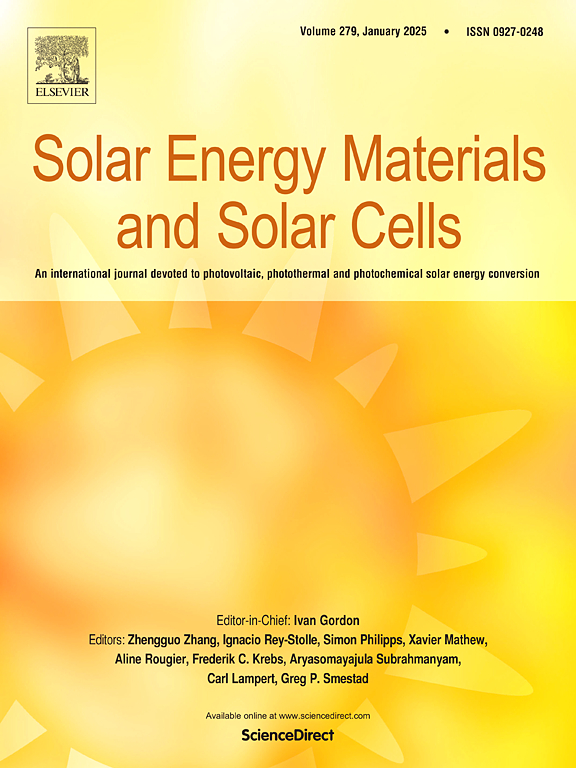Extending the kinetic theory-based thermal conductivity model to reciprocal molten salt mixtures with short-range ordering via the Modified Quasi-chemical Model in the Quadruplet Approximation
IF 6.3
2区 材料科学
Q2 ENERGY & FUELS
引用次数: 0
Abstract
Molten salts are among the most promising materials for advanced energy systems in the renewable energy and nuclear fields, with thermal conductivity being a critical property that directly impacts the efficiency of heat transfer processes. However, reliable experimental data on the thermal conductivity for molten salt mixtures is scarce, requiring the use of atomistic simulations and robust theoretical frameworks to fill this gap. This study extends a previously developed kinetic theory-based model for common-anion molten salt mixtures to reciprocal molten salt mixtures (for example, LiF–KCl) as a function of temperature and composition. To account for the effects of first nearest neighbor short-range ordering between cations and anions, pair fractions in the Modified Quasi-chemical Model in the Quadruplet Approximation were employed. The current model fills an important gap in the modeling of thermal conductivity for reciprocal molten salt mixtures, since no existing model has accurately characterized their thermal conductivity. Predicted results were compared with various equilibrium molecular dynamics simulations performed in this work for solutions involving Li, Na, K/F, Cl, as well as with existing experimental measurements. The model also predicted the thermal conductivity of reciprocal molten salt mixtures proposed in the literature as potential phase change materials. The current model demonstrated excellent predictive capability and accuracy of thermal conductivity for both monoatomic and polyatomic anion reciprocal molten salt mixtures, with an estimated error margin up to 20%. This advancement will significantly contribute to improving the statement of knowledge of reciprocal molten salt thermal conductivity and provide valuable tools for evaluating the thermal conductivity of molten salt mixtures in engineering applications.
基于四重态近似的修正准化学模型,将基于动力学理论的热导率模型扩展到具有短程有序的互易熔盐混合物
熔盐是可再生能源和核领域先进能源系统中最有前途的材料之一,其导热性是直接影响传热过程效率的关键特性。然而,关于熔盐混合物导热性的可靠实验数据很少,需要使用原子模拟和强大的理论框架来填补这一空白。这项研究将先前开发的基于动力学理论的普通阴离子熔盐混合物模型扩展到互易熔盐混合物(例如,liff - kcl),作为温度和成分的函数。为了解释阳离子和阴离子之间第一近邻短程有序的影响,采用了四重态近似中修正准化学模型中的对分数。目前的模型填补了互反熔盐混合物热导率建模的一个重要空白,因为没有现有的模型能够准确地表征它们的热导率。预测结果与本研究中涉及Li+, Na+, K+/F−,Cl−溶液的各种平衡分子动力学模拟以及现有的实验测量结果进行了比较。该模型还预测了文献中提出的作为潜在相变材料的互易熔盐混合物的导热性。目前的模型对单原子和多原子阴离子互易熔盐混合物的热导率具有出色的预测能力和准确性,估计误差可达20%。这一进展将极大地促进对互易熔盐导热系数的认识,并为工程应用中评估熔盐混合物的导热系数提供有价值的工具。
本文章由计算机程序翻译,如有差异,请以英文原文为准。
求助全文
约1分钟内获得全文
求助全文
来源期刊

Solar Energy Materials and Solar Cells
工程技术-材料科学:综合
CiteScore
12.60
自引率
11.60%
发文量
513
审稿时长
47 days
期刊介绍:
Solar Energy Materials & Solar Cells is intended as a vehicle for the dissemination of research results on materials science and technology related to photovoltaic, photothermal and photoelectrochemical solar energy conversion. Materials science is taken in the broadest possible sense and encompasses physics, chemistry, optics, materials fabrication and analysis for all types of materials.
 求助内容:
求助内容: 应助结果提醒方式:
应助结果提醒方式:


